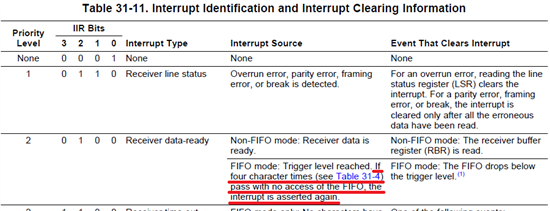Hello.
I am using UART with FIFO mode.
The TRM(P1482: Table31-11) describes about IIR INTID:
If four character times (see Table 31-4) pass with no access of the FIFO, the interrupt is asserted again.
Although I tried to monitor INTID regs EVTFLAG when I got 1st Receiver data-ready, I can not get another interrupt flag.
My question is:
1. How can I get this second interrupt?
2. What kind of interrupt is asserted? (I think it is INTID=010b : Receiver data-ready)
If you need test code of this, coule you let me know.
I can attach it.
Best regards, RY


